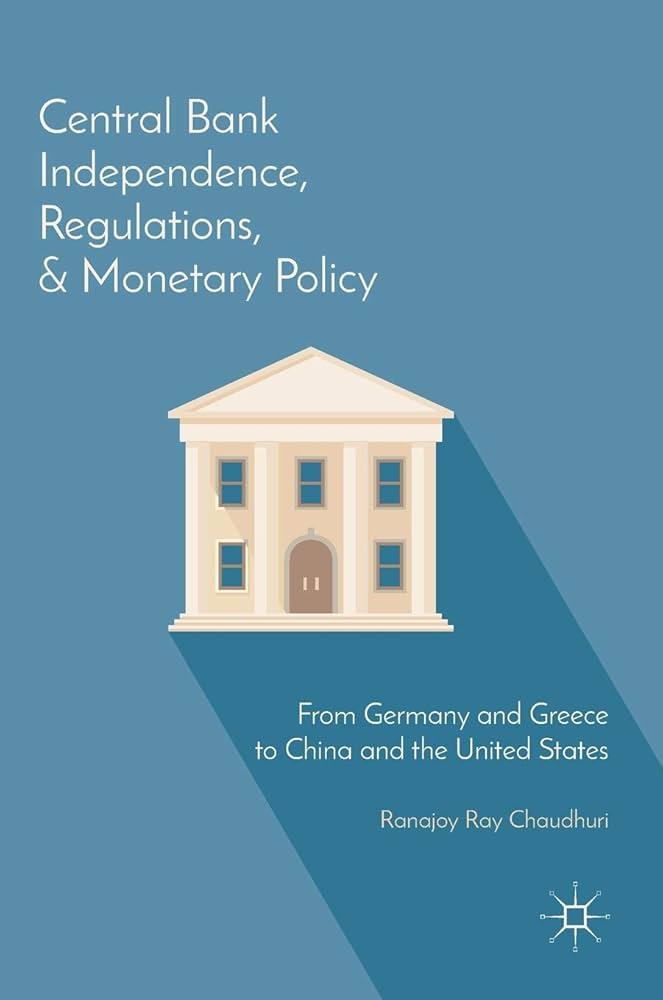In the intricate dance of global finance, central banks hold the baton, orchestrating the symphony of economic stability and growth. Yet, beneath the harmonious facade lies a complex interplay of policies that reverberate through the corridors of corporate power. As these institutions adjust interest rates, manipulate monetary supply, and implement regulatory frameworks, the ripples of their decisions cascade into the realm of corporate credit risk. This article delves into the profound impact of central bank policies on the financial health of corporations, unraveling the delicate balance between opportunity and peril. With an authoritative lens, we explore how these monetary maestros influence the creditworthiness of businesses, shaping their ability to thrive or falter in an ever-evolving economic landscape. Join us as we uncover the hidden connections between central bank strategies and the corporate world, illuminating the pathways through which policy decisions echo across boardrooms and balance sheets.
Navigating the Ripple Effect of Monetary Policies on Corporate Creditworthiness
The intricate dance of central bank policies often sends ripples across the corporate landscape, reshaping the contours of creditworthiness. As interest rates rise or fall, corporate borrowing costs shift, influencing the delicate balance sheets of businesses. A hike in rates can squeeze margins, making debt servicing a daunting task for companies with heavy leverage. Conversely, lower rates may offer a reprieve, encouraging expansion but also potentially inflating asset bubbles.
- Interest Rate Adjustments: Affects corporate debt servicing capabilities.
- Quantitative Easing: May enhance liquidity but could mask underlying financial vulnerabilities.
- Regulatory Changes: Can alter risk assessments and credit ratings.
Furthermore, quantitative easing and other unconventional measures inject liquidity into the market, often buoying corporate bonds. Yet, this can lead to a precarious scenario where companies with shaky fundamentals appear more stable than they are. As central banks navigate the tightrope of economic stability, businesses must remain vigilant, adapting strategies to maintain robust credit profiles in the face of evolving monetary landscapes.
Decoding the Dynamics Between Interest Rates and Business Debt Sustainability
The intricate relationship between interest rates and business debt sustainability is a dance choreographed by central banks, with every rate adjustment sending ripples through the corporate world. Interest rates, the price of borrowing money, directly influence a company’s ability to manage its debt. When rates are low, businesses find it easier to service existing debts and take on new loans for expansion. Conversely, rising rates can squeeze profit margins, making it challenging for companies to meet their debt obligations.
Key factors that businesses must consider in this dynamic include:
- Cost of Borrowing: Higher interest rates increase the cost of borrowing, potentially leading to reduced capital expenditure and slowed growth.
- Debt Refinancing: Companies with significant short-term debt may face increased refinancing risks as rates climb.
- Cash Flow Management: Efficient cash flow strategies become crucial to ensure debt sustainability in a high-rate environment.
Central banks, therefore, wield significant power in shaping the economic landscape, with their policies echoing through the corridors of corporate finance, affecting not just the cost of credit but the very sustainability of business operations.
Strategic Insights into Mitigating Corporate Exposure Amid Central Bank Interventions
In the intricate dance of economic policy, central banks often wield significant influence over corporate credit risk through their monetary interventions. As interest rates fluctuate and liquidity measures shift, companies must navigate these changes with strategic foresight. One effective approach is to maintain a diversified debt portfolio, ensuring that exposure is spread across various maturities and interest rate environments. This strategy not only buffers against sudden rate hikes but also provides flexibility in refinancing options.
Furthermore, corporations can enhance their resilience by strengthening their balance sheets. Increasing cash reserves and reducing leverage can provide a cushion against volatility, while hedging interest rate risks through financial instruments can offer additional protection. Proactive engagement with financial advisors to assess and recalibrate risk management strategies is crucial. By anticipating central bank moves and adapting accordingly, businesses can safeguard their financial health and maintain stability amid the ebb and flow of economic tides.
Crafting Resilient Financial Strategies in Response to Evolving Monetary Landscapes
Central bank policies wield significant influence over corporate credit risk, shaping the economic environment in which businesses operate. As monetary authorities adjust interest rates, implement quantitative easing, or engage in other unconventional monetary measures, the ripple effects on corporate creditworthiness can be profound. Interest rate changes, for instance, directly affect the cost of borrowing, impacting companies’ debt servicing capabilities. A hike in rates can lead to increased borrowing costs, squeezing profit margins and heightening the risk of default for firms with substantial debt loads.
Furthermore, quantitative easing and other liquidity-enhancing measures can create a more favorable borrowing environment by lowering yields and encouraging risk-taking. However, this can also lead to a mispricing of risk, as investors search for yield in a low-interest-rate landscape, potentially inflating asset bubbles. The challenge for businesses is to craft resilient financial strategies that not only mitigate these risks but also capitalize on opportunities presented by such policies. Key considerations include:
- Maintaining a balanced debt-to-equity ratio to weather interest rate fluctuations.
- Diversifying funding sources to reduce dependency on volatile markets.
- Implementing robust risk management frameworks to identify and respond to potential financial stressors.
By understanding and anticipating the impacts of central bank actions, companies can better navigate the complexities of today’s dynamic monetary landscape.





